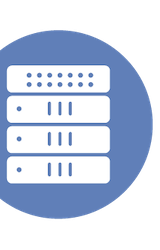Stephen Foskett provides an in-depth analysis of the presentations and technological showcases at Tech Field Day during his December 18 appearance on Techstrong Gang. He focuses on the innovative uses of artificial intelligence in enterprise technologies, which were highlighted during the event. For additional insights and coverage on Tech Field Day, watch Stephen Foskett’s regular appearances on Techstrong Gang.
Intel IPU – Unlocking the Power of Functional Isolation
Intel’s innovative Infrastructure Processing Unit (IPU) addresses the challenges in traditional CPU designs in cloud platforms, enhancing efficiency in resource management. This technology supports functional isolation and boosts security by enabling the segregation of processing tasks between CPUs and enhanced Network Interface Cards (NICs), freeing up CPU resources for more application-focused tasks. This article by Sulagna Saha at Gestalt IT details the adoption of IPUs based on Intel’s presentation at Networking Field Day 35.
Nature Fresh Farms Leverages Intel and AI to Maximize Yield
At Nature Fresh Farms, leveraging Intel technology and advanced AI capabilities has significantly enhanced agricultural operations and maximized crop yields. Through the strategic use of data analytics and machine learning, the company is able to predict crop growth patterns, optimize greenhouse conditions, and reduce waste while increasing production efficiency. This innovative integration exemplifies how cutting-edge technology is transforming the farming industry, leading to more sustainable practices and improved outcomes. Read more in this Gestalt IT article by Girard Kavelines, sponsored by Intel and focused on their AI Field Day 4 presentations.
Running Enterprise Industry Specific Private AI with Intel, and VMware by Broadcom
Discover the impact of merging AI with industry-specific solutions in a recent exploration by Broadcom, where they teamed up with Intel and VMware to enhance enterprise operations. This initiative focuses on utilizing private AI infrastructure to drive efficiency and innovation, addressing unique industry challenges while maintaining data privacy and security. Learn more in this Gestalt IT article by Liselotte Foverskov, sponsored by Intel and focused on their presentation at AI Field Day 4.
Networking Field Day 35 Newbie Pt.1
Michael Wynston shares his experience as a first-time delegate at Networking Field Day 35, discussing the deep dive into advanced networking technologies and trends featured during the sessions. He highlights the unique opportunity to engage directly with innovative vendors and thought leaders which enhanced his understanding of the current and future landscape of network technology. Wynston focuses on the presentations of Intel, Hedgehog, and Arrcus in this post.
Intel – Is It an IPU or a DPU or What?
Ed Horley dives into the evolving lexicon of data processing units, probing Intel’s terminology around IPUs and DPUs. His article seeks to clarify the distinctions and overlaps between these emerging technologies that are integral to modern infrastructure design. Horley’s expert analysis is crucial for those in the tech industry looking to parse the nuances and understand the implications of Intel’s contributions to data center innovation. Read more in this article, sparked by Intel’s presentation at Networking Field Day 35.
Unveiling the Role of CPUs in AI Inference and a Growing Trend of Accelerator Alternatives With Intel
In this Gestalt IT article, Colleen Coll considers Intel’s approach to AI inference, examining the evolving role of CPUs and the rising inclination towards specialized accelerator alternatives. Her write-up unveils how Intel is navigating this shift, focusing on optimizing CPUs for AI tasks while also embracing the potential of dedicated accelerators for more demanding workloads. The article highlights Intel’s strategic efforts to meet diverse AI computational needs, ensuring they remain at the forefront of high-performance AI innovation. This sponsored article follows Intel’s presentation at AI Field Day 4 earlier this year.
Summertime Fun With Networking Field Day 35
Tom Hollingsworth looks forward to Networking Field Day 35, next week’s must-watch event. Tune in Wednesday as Hedgehog debuts their exciting cloud networking solution, promising scalability and robust security features. Following them, Intel’s IPU team will showcase the transformative power of accelerators with compelling use cases. Thursday features cPacket unveiling their analytics solution, aiming for real-time feedback from our live audience. Arrcus then updates us on their latest developments in data center networking. Closing the event, Selector AI returns to showcase their latest AI features. Join us for two days of cutting-edge insights and innovation at Networking Field Day!
Summertime Fun with Networking Field Day 35
The heatwave seems like it’s here to stay but that means more time to enjoy the great presentations at Networking Field Day 35. We’ve got a great lineup of presenters and delegates ready to discuss the hottest trends in the networking industry live for our community July 10 and 11. It promises to be an exciting event filled with great conversations and wonderful technical content.
Intel Xeon CPUs – How Efficiency Makes It a Top Contender for AI Inference
In the AI arms race, Intel’s latest 5th generation Xeon processors have emerged as a powerful and efficient alternative to GPUs for certain AI workloads, according to Ben Young’s AI Field Day article. With a 36% performance boost in specialized AI tasks enabled by Advanced Matrix Extensions (AMX), these CPUs accelerate deep learning particularly for AI inference, offering a cost-effective option for applications with lighter and less frequent processing needs. Intel’s dedication is clear as they bolster their CPUs’ AI capabilities and facilitate developers with tools like the OpenVINO toolkit, positioning Xeon CPUs as a feasible choice for an array of AI workloads, balancing the scale with GPUs based on the specific requirements of the task. Read more in this Gestalt IT article by Ben Young, sponsored by Intel.
Nature Fresh Farms – Optimizing Indoor Farming Practices With AI and Intel
At AI Field Day, Nature Fresh Farms, a leader in greenhouse farming in North America, revealed how the strategic use of Intel AI solutions revolutionized their farming practices towards precision agriculture. Keith Bradley highlighted the transition from traditional to high-tech farming, with on-premises Intel-based infrastructure enabling real-time data analytics for improved yield, resource efficiency, and operational control. Emphasizing sustainability and the growing importance of AI in agriculture, Bradley shared how Nature Fresh Farms harnesses predictive AI models on the farm, leveraging technology to optimize every aspect from irrigation to packaging and contributing to a marked increase in yield per square meter annually. Read more in this Gestalt IT article by Sulagna Saha.
Deploying AI Cost-Effectively at Scale With Kamiwaza
At AI Field Day, Kamiwaza introduced their open-source stack, designed to enable GenAI to scale elastically, addressing the common hurdles of infrastructure cost and operational scale faced by enterprises. With a vision to empower businesses to achieve a trillion inferences a day and ignite the 5th industrial revolution, Kamiwaza’s stack facilitates AI deployment across various environments, from cloud to edge, guaranteeing security and manageability of dispersed data. The stack’s compatibility with Intel CPUs ensures that enterprises can harness efficient AI inferencing power with minimal energy consumption, making sophisticated AI accessible and sustainable for organizations of all sizes. Read more in this Gestalt IT article by Sulagna Saha.
Compute Requirements in the AI Era With Intel’s Lisa Spelman
In this TechArena interview, Allyson Klein explores with Intel’s Lisa Spelman the evolving compute demands as enterprises gear up for the AI revolution and strive for widespread AI integration. They delve into the current state of AI adoption across industries while highlighting the critical role of software, tools, and standards in scaling AI solutions effectively. This insightful discussion underscores the thriving synergy between hardware advancements and software ecosystems necessary to power the next generation of AI applications.
Google Cloud, the Preferred Platform for Building Competitive AI Models
At AI Field Day, Google Cloud’s Brandon Royal showcased the giant’s comprehensive strategy for meeting today’s burgeoning AI demands, leveraging one of the industry’s most extensive digital infrastructures. Emphasizing the significance of AI infrastructure in conjunction with generative AI (GenAI), Google Cloud highlighted their commitment to innovation, asserting their platform as the superhighway for AI-forward companies. With Google Cloud providing robust compute power off its own infrastructure, businesses can harness AI’s opportunities without the traditionally high entry barriers of infrastructure costs and expertise. Read more in this article by Sulagna Saha for Gestalt IT.
Deciding When to Use Intel Xeon CPUs for AI Inference
At AI Field Day, Intel offered insights into strategic decision-making for AI inference, highlighting scenarios where Intel Xeon CPUs outshine traditional GPU solutions on both on-premises and cloud servers. By evaluating the specific requirements of AI inference workloads, Intel guides users to make informed choices that enhance value while optimizing their existing server infrastructure. This approach emphasizes efficiency and practicality in deploying AI capabilities, ensuring that organizations can navigate the complex landscape of hardware selection for their AI initiatives. Read more in this Futurum Research Analyst Note by Alastair Cooke.
VMware Private AI at AI Field Day
VMware’s presentation with Intel at AI Field Day centered on optimizing on-premises AI workloads, highlighting the capability of Intel Sapphire Rapids CPUs with Advanced Matrix Extensions (AMX) to efficiently perform large language model (LLM) AI inference, traditionally a task for GPUs. Demonstrating that AI can be resource-effective on CPUs, the discussion covered the technical prerequisites for harnessing AMX in vSphere environments and the ongoing integration of these accelerators into popular AI frameworks. With CPUs increasingly capable of handling AI tasks through built-in matrix math acceleration, VMware showcases a sustainable, cost-effective approach, potentially reshaping the hardware strategies for mixed workload servers. Read more in this analyst note for The Futurum Group by Alastair Cooke.
Gemma and Building Your Own LLM AI
At AI Field Day 4, Intel invited the Google Cloud AI team to showcase their Gemma large language model (LLM), revealing insights into the advanced infrastructure used for building such models on Google Cloud. The presentation underlined Gemma’s efficiency with fewer parameters for inference, highlighting Google Cloud’s strength in analytics and AI, particularly in managing differing resource needs between model training and application inference phases. Google Cloud’s integration of AI in products was illustrated with Google Duet, an AI-based assistant that aids in software development, exemplifying the potential future where AI handles more coding tasks, freeing up developers for high-level problem-solving and design. Read more in this analyst note for The Futurum Group by Alastair Cooke.
Intel Xeon CPUs on VMware vSphere – A Powerful and Cost-Effective Twosome for AI/ML Workloads
With AI ingrained in our daily routines, Forward Networks delivered a strategic approach at Networking Field Day, demonstrating how even complex networking data can be made manageable through AI integration. Their platform uses a data-first principle, enabling AI to interact effectively with a digital twin of network infrastructure, simplifying tasks for network engineers. The innovative AI Assistant within Forward Networks’ ecosystem assists in constructing queries for the Network Query Engine, fostering trust through verifiable, human-readable outputs, and providing a gateway for more intuitive network management. Read more in this article by Sulagna Saha on Gestalt IT.
Taking on AI Inferencing With 5th Gen Intel Xeon Scalable Processors
Intel’s 5th Generation Xeon Scalable Processor, known as Emerald Rapids, offers an advantageous solution for AI inferencing, providing a compelling alternative to GPUs in certain applications. Highlighted during the AI Field Day event, Intel showcased the processor’s suitability for general-purpose AI workloads, especially for private AI deployments requiring lower latency and mixed workloads. In his presentation, Ro Shah illustrated that Xeon CPUs are well-equipped to handle AI models with fewer than 20 billion parameters, making them a cost-effective and efficient choice for many enterprises. Read more in this article from Gestalt IT.
Insights From the AI Field Day: A Futurum Group Overview
In this LinkedIn Pulse article, Paul Nashawaty of The Futurum Group summarizes all of the AI Field Day presentations, highlighting VMware’s deep dive into Private AI in collaboration with industry giants like NVIDIA and IBM, and Intel’s focus on deploying AI inference models with Xeon CPUs across diverse environments. Next-generation AI-infused storage solutions from Solidigm and SuperMicro underscored the critical role of optimized storage in AI, while Vast Data focused on addressing the growing data demands of AI and HPC workloads. Google Cloud’s session on AI platforms and infrastructures showcased innovative approaches with Kubernetes at the core, paving the way for accessible and powerful AI development and deployment.








